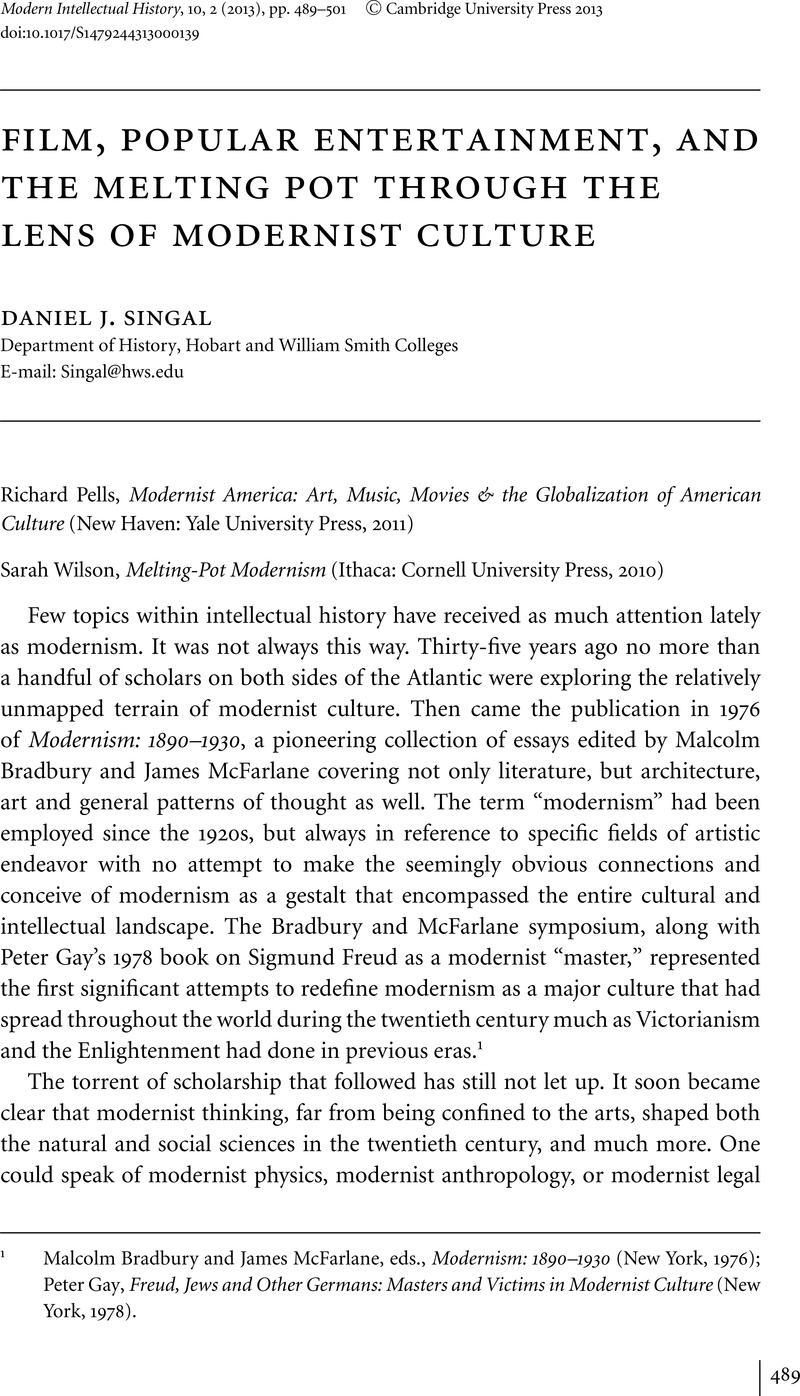No CrossRef data available.
Published online by Cambridge University Press: 11 July 2013

1 Bradbury, Malcolm and McFarlane, James, eds., Modernism: 1890–1930 (New York, 1976)Google Scholar; Gay, Peter, Freud, Jews and Other Germans: Masters and Victims in Modernist Culture (New York, 1978)Google Scholar.
2 Kaplan, E. Ann, “Introduction,” in Kaplan, , ed., Postmodernism and Its Discontents: Theories, Practices (New York, 1988), 1–4Google Scholar.
4 Trilling, Lionel, Beyond Culture: Essays on Literature and Learning (New York, 1968), 3, 19–25Google Scholar.
5 Davies, Margaret, “Modernity and Its Techniques,” in Chefdor, Monique, Quinones, Ricardo and Wachtel, Albert, eds., Modernism: Challenges and Perspectives (Urbana, IL, 1986), 146–58, 153Google Scholar.
6 Although Wilson doesn't mention it, this notion of a continuous interchange among cultures, especially those tied to ethnic groups, bears a strong resemblance to David A. Hollinger's concept of “cosmopolitanism.” See Hollinger, , In the American Province: Studies in the History and Historiography of Ideas (Bloomington, IN, 1985), 59Google Scholar.
7 James, Henry, The American Scene, ed. Auden, W. H. (New York, 1946), 138–9Google Scholar.